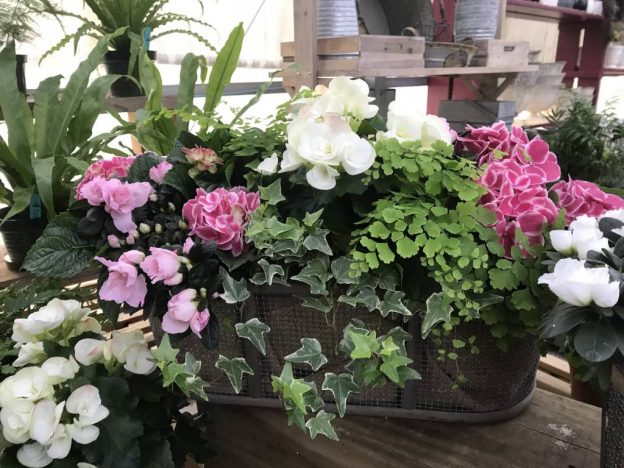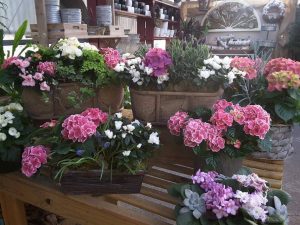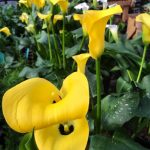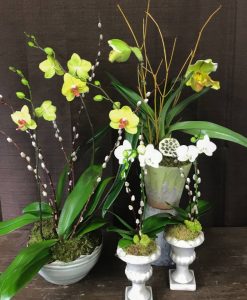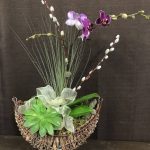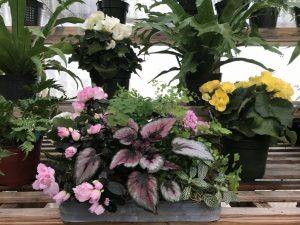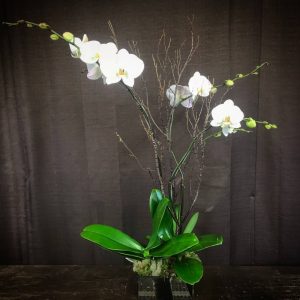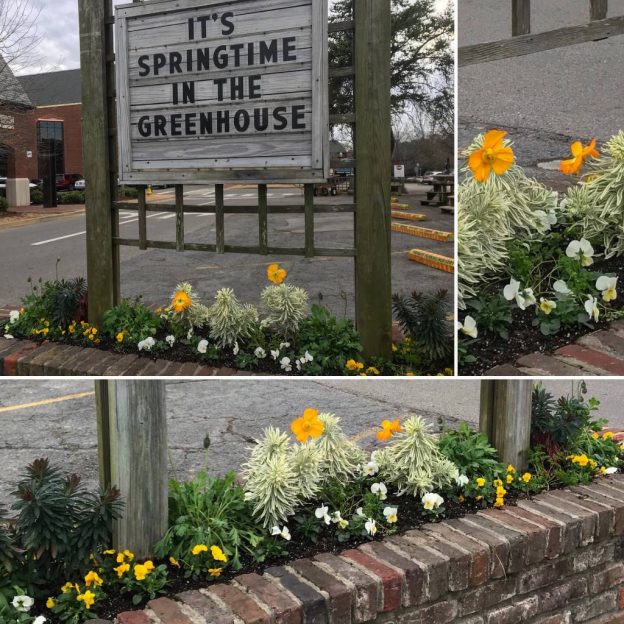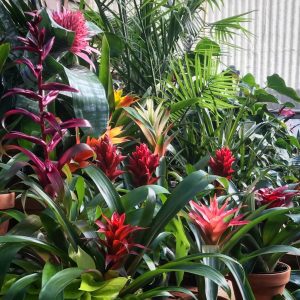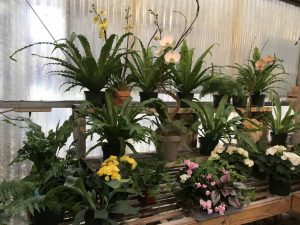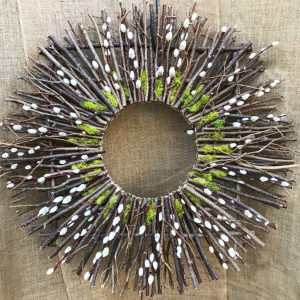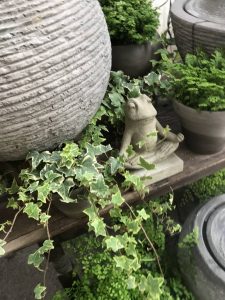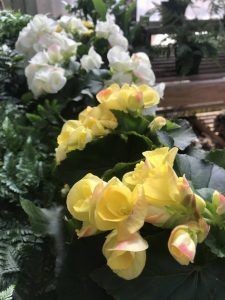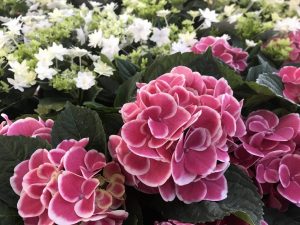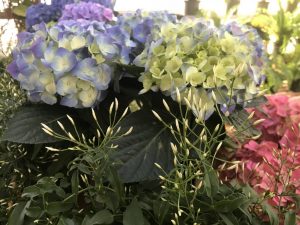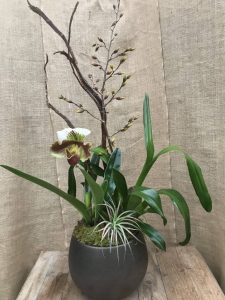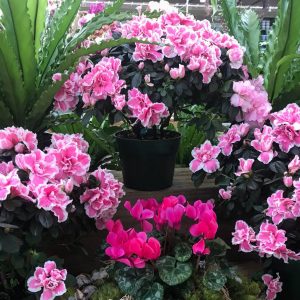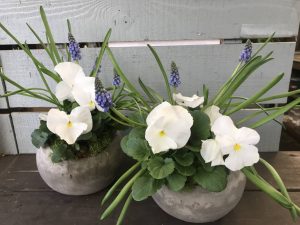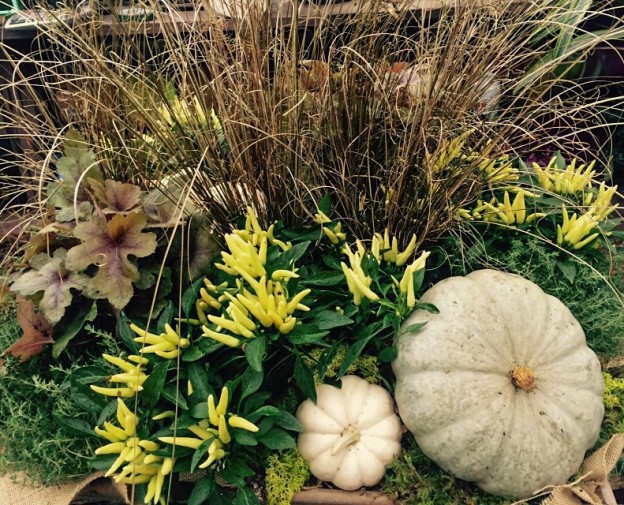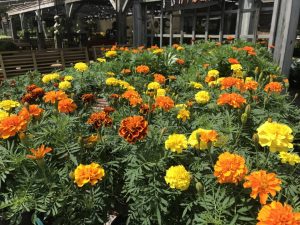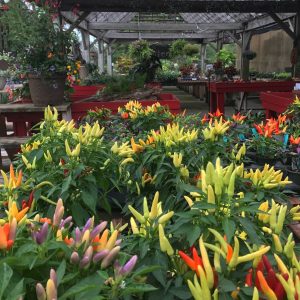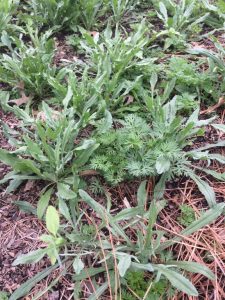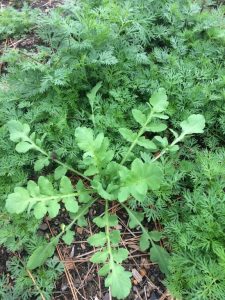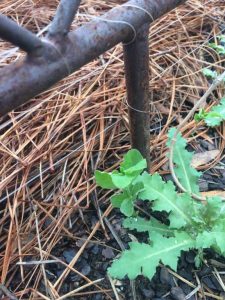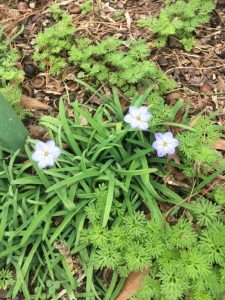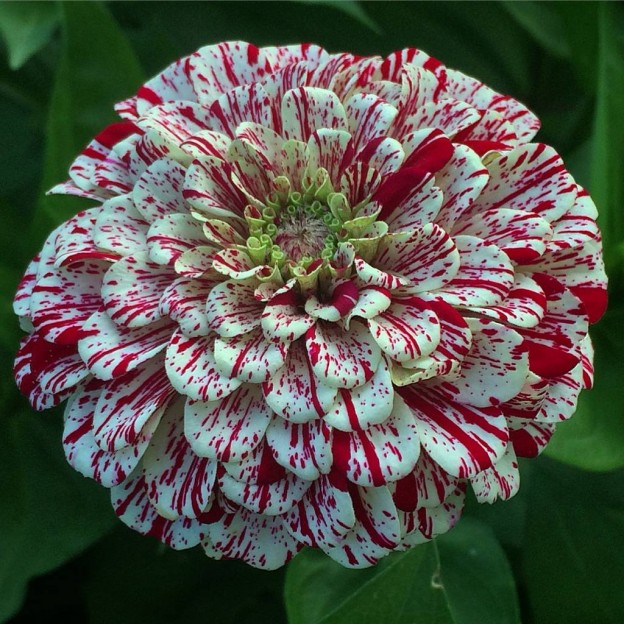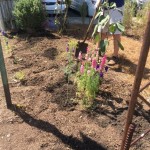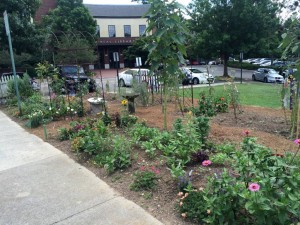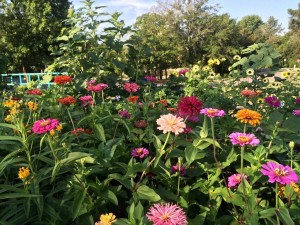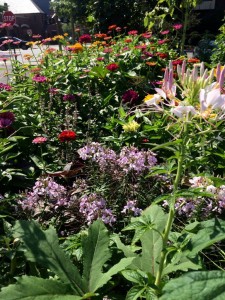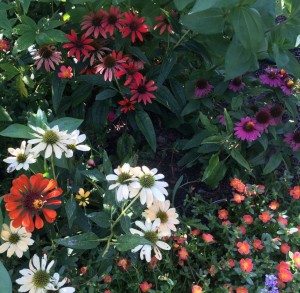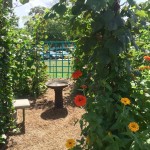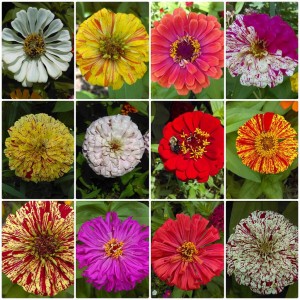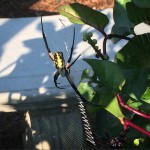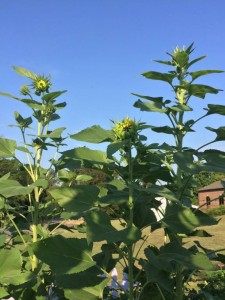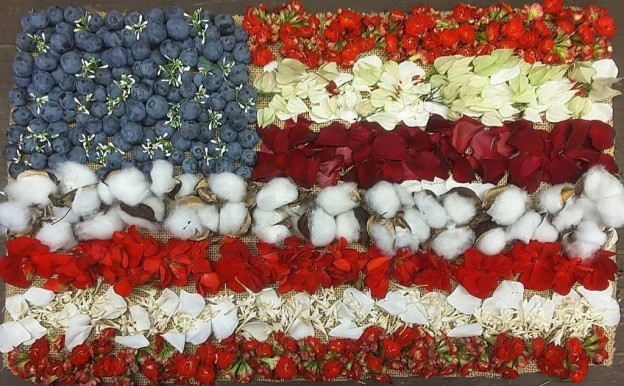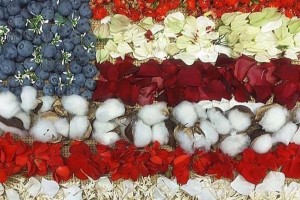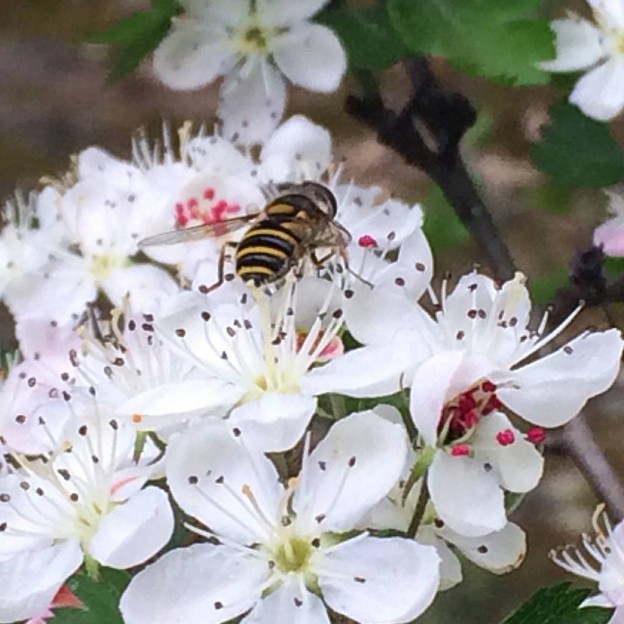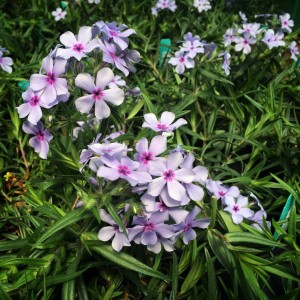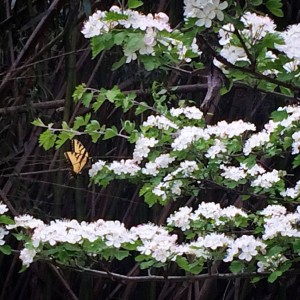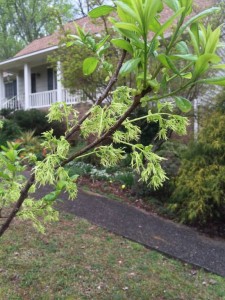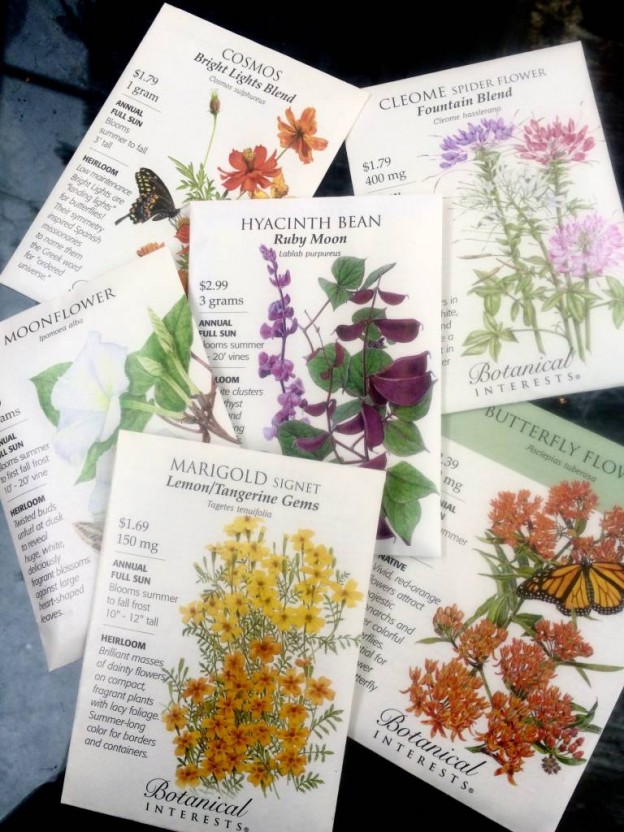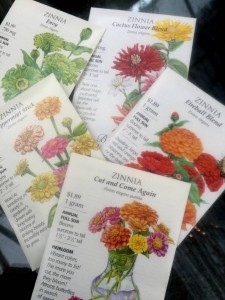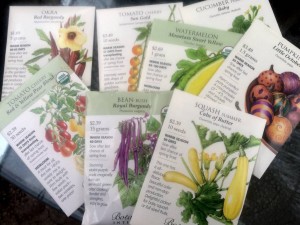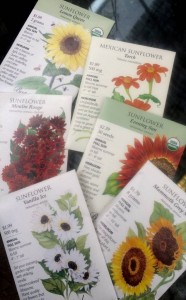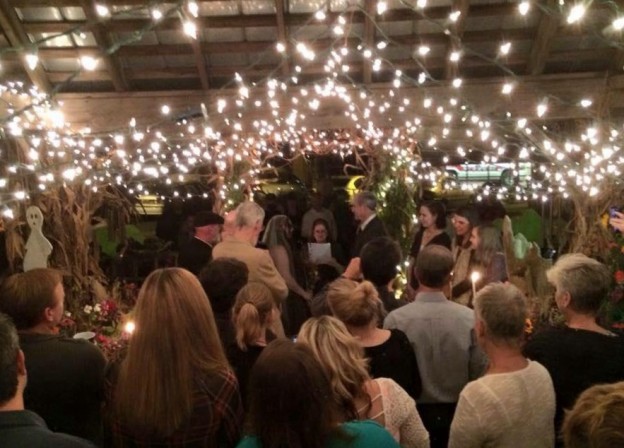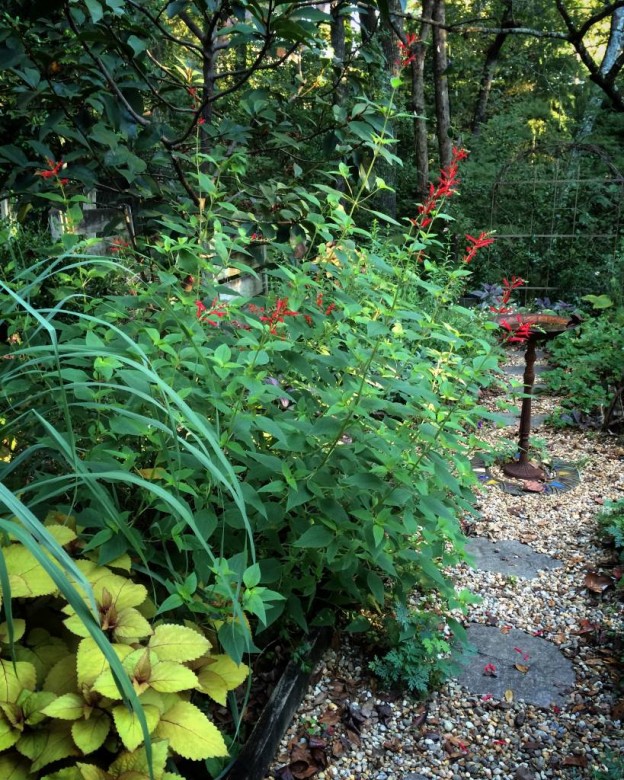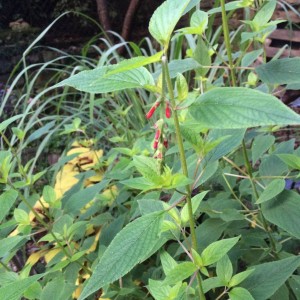
Tithonia and Larkspur…
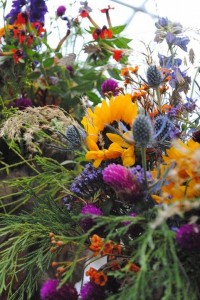 Saturday, October 10th, 2015, was a magical, musical night. On this cool fall evening, Molly, a member of our Oak Street Garden Shop family for ten years, was married under white twinkling lights, surrounded by a circle of family and friends.
Saturday, October 10th, 2015, was a magical, musical night. On this cool fall evening, Molly, a member of our Oak Street Garden Shop family for ten years, was married under white twinkling lights, surrounded by a circle of family and friends.

Flowers in Driftwood…
Earlier in the year she’d become engaged to V, aka Chuck. Not long after this, she came to me saying she’d really love to get married at the shop and did I think the owner would be okay with it.
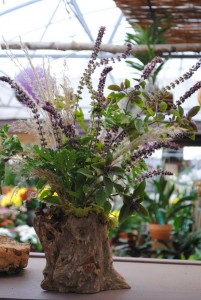
‘African Blue’ Basil Blooms…
Oh, that would be wonderful, I thought, and, certainly, Billy would say yes. I asked if they had a date in mind. October 10th, she answered. Oh, a fall wedding…how lovely it would be!
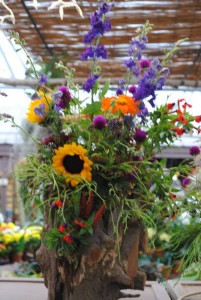 Of course, Billy did say yes, after cautioning the shop would be fully stocked since that would be in the middle of the fall pansy season. Well, that would make it even prettier, we thought!
Of course, Billy did say yes, after cautioning the shop would be fully stocked since that would be in the middle of the fall pansy season. Well, that would make it even prettier, we thought!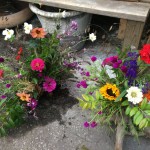
Molly and her mom, Dená, another 10 year employee, made it perfectly clear they didn’t want to cause any trouble or difficulty, and we knew they meant what they said. From my perspective this wedding was a joy from beginning to end.
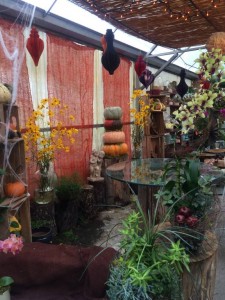
The cake would be set up here…
There wasn’t that much for us to do, really. Molly, her mom, and family took care of the planning, and each guest was asked to bring a dish. It would be a relaxed night, full of music, laughter, and dancing just as Molly wanted.

The bouquet…
Specifically, Celtic music and Irish dancing. Molly had taught Irish dance for a number of years, and many of her dancing friends and students would be at her wedding. So the bands Jasper Coal, Vulcan Eejits, and singer Beth Wetheral provided beautiful, lyrical, and at times, boisterous music amid the many guests.
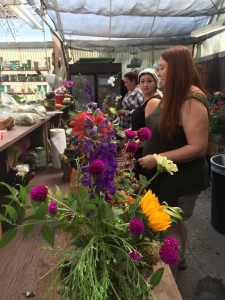
We worked steadily through the day…
Of course, my interest prior to the ceremony was the shop and the flowers and creating a beautiful setting for Molly and V’s nuptials.
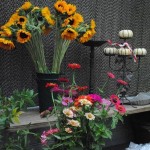 Jamie ordered sunflowers, larkspur and other flowers from the wholesale house and brought perennial sunflowers and zinnias from her garden. The Better Late Than Never Garden offered up bright orange tithonia and colorful zinnias, and we cut purple gomphrena and ‘African Blue’ basil blooms from the sign planter in front of the shop.
Jamie ordered sunflowers, larkspur and other flowers from the wholesale house and brought perennial sunflowers and zinnias from her garden. The Better Late Than Never Garden offered up bright orange tithonia and colorful zinnias, and we cut purple gomphrena and ‘African Blue’ basil blooms from the sign planter in front of the shop.

Setting the flowers out…
Molly contributed blooming miscanthus, Pinkie cut dahlias and a long section of climbing fern from her home, and I brought leucothoe, sea oats, and golden chamaecyparis out of my yard to use in colorful bouquets we placed in driftwood pieces. These we arranged on the red market tables. They’d be on either side of Molly as she walked down the “aisle”.
Jamie designed two beautiful flowered clips for her hair and a loose bouquet of sunflowers, zinnias, gomphrena, and greenery for her to carry down the aisle.
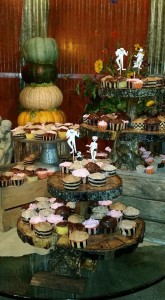
Cupcakes on handmade wood stands – a wedding gift…
Jamie, Molly, and myself worked steadily most of the day on the flowers, and the rest of the staff of Angie, Pinkie, Danielle, Bert, and Ben really stepped up their game too, taking care of most of the customers since the shop was open until 5:30 on a busy day and the wedding would be at 7:00. It was truly a group effort.
Finally the time came, guests began to arrive, and we scrambled to get changed from work clothes to something more fitting for a wedding. In the tiny office, with the door screened by a blanket and Danielle helping with her hair and makeup, Molly was transformed from a garden shop worker bee into a beautiful bride.
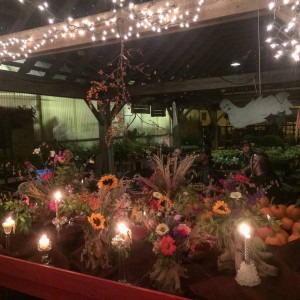
Her wedding dress, in rich brown chiffon, had been hand-sewn by her mother, Dená. And what a beautiful dress! On it she’d painted an entire colorful flower garden along front, complete with several butterflies and bees.

A Painted Garden…
Her inspiration had been the ‘Better Late Than Never’ pollinator garden across the street from the shop, and the exquisite painting incorporated all the flowers in it – sunflowers, tithonia, zinnias, gomphrena, and more. It was truly a work of art, and Molly looked beautiful in it!
 Finally it was time! Everyone gathered around the groom and family members standing under the arch marking the entrance to the nursery.
Finally it was time! Everyone gathered around the groom and family members standing under the arch marking the entrance to the nursery.
Then Molly came into view from the greenhouse, entering the circle of friends and relatives standing under hundreds of tiny white lights. There, in a beautiful ceremony incorporating the Irish tying of the knot, Molly and V took their vows.
 After, as the music played on and laughter filled the air, everyone danced and sang the night away. A beautiful cool evening in October had indeed turned out to be the perfect night for a wedding.
After, as the music played on and laughter filled the air, everyone danced and sang the night away. A beautiful cool evening in October had indeed turned out to be the perfect night for a wedding.
By Kris Blevons
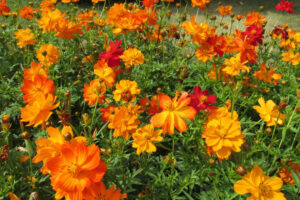
![]()
![]()

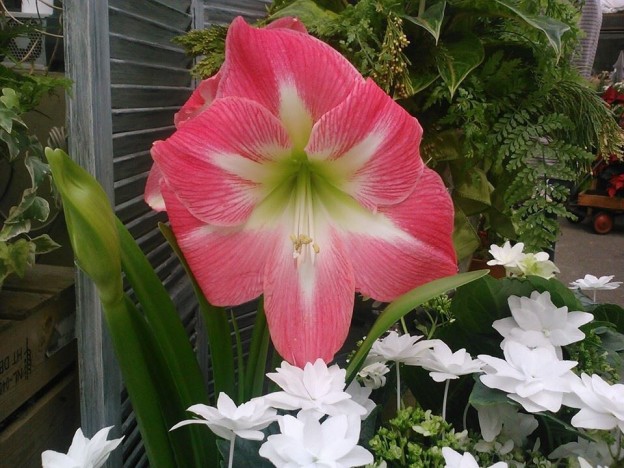
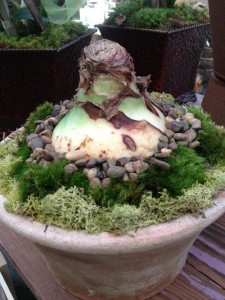
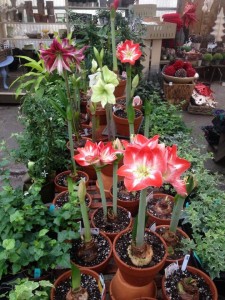
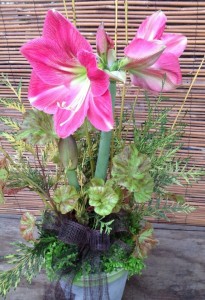
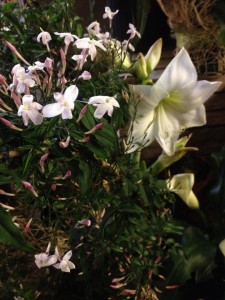
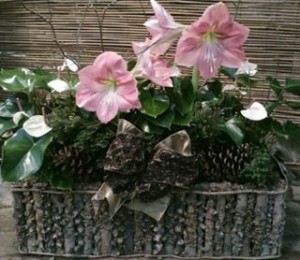
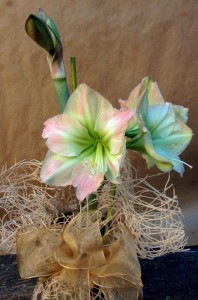
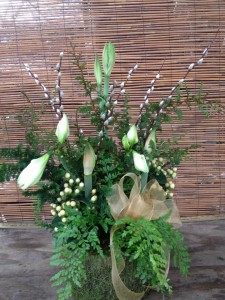
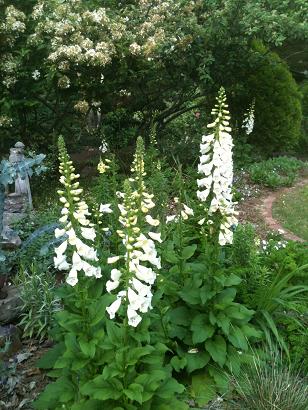
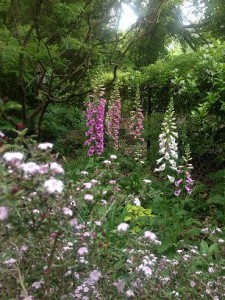

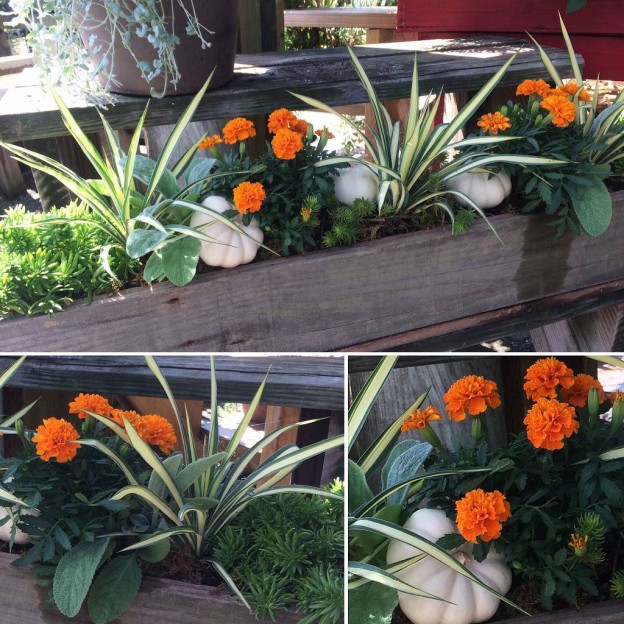

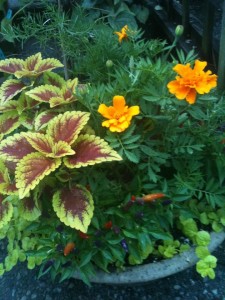
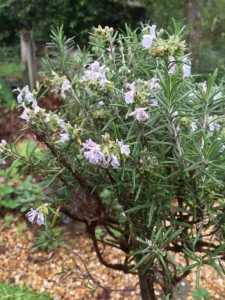
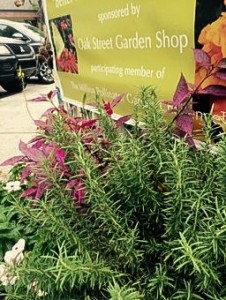
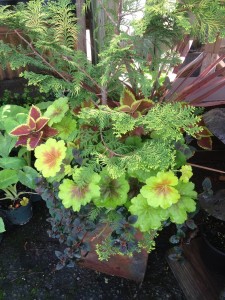
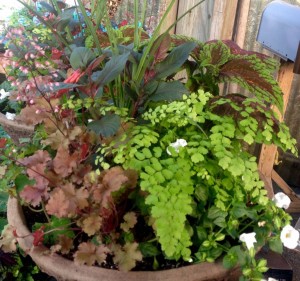
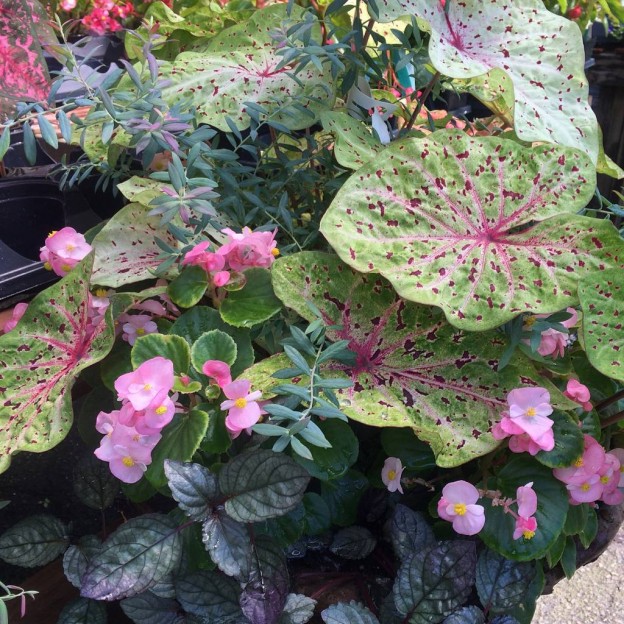
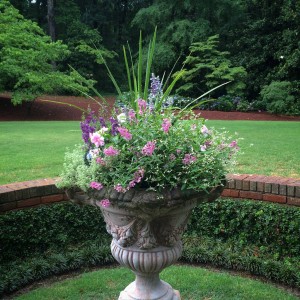

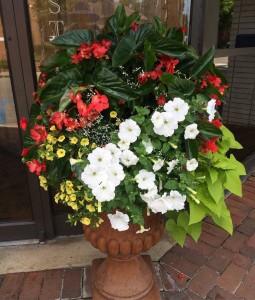
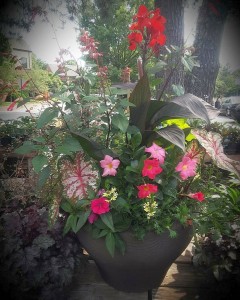
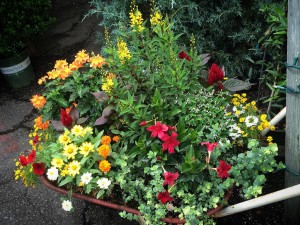
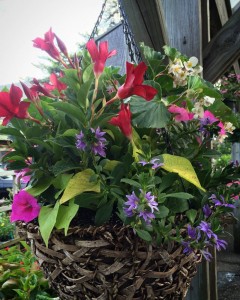
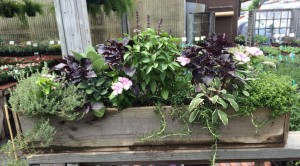
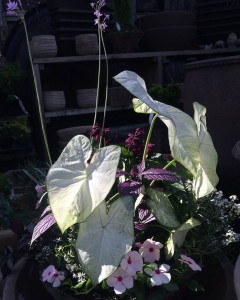
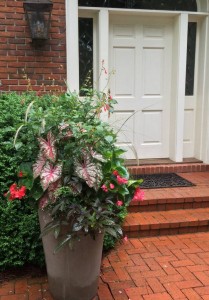
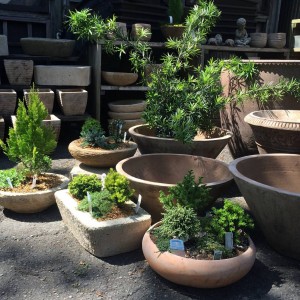
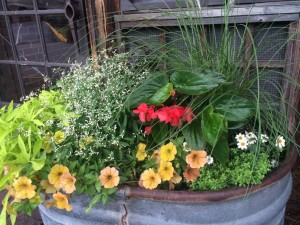
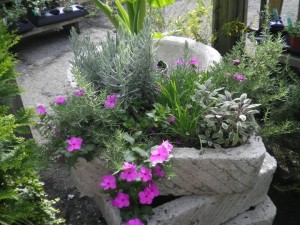
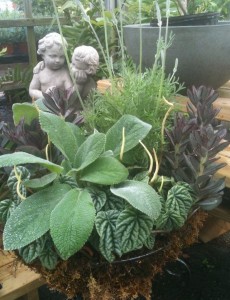
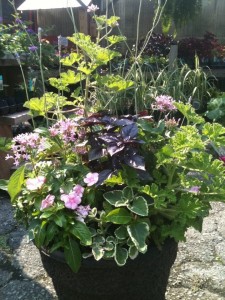
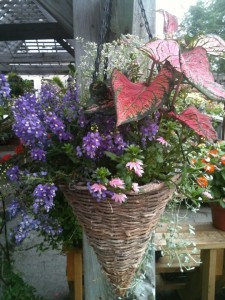
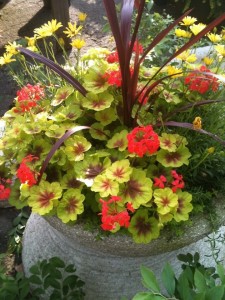
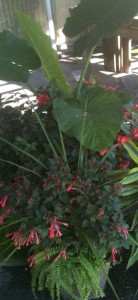
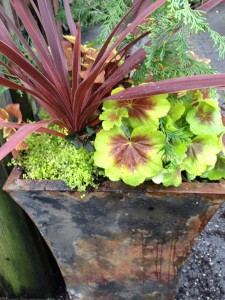
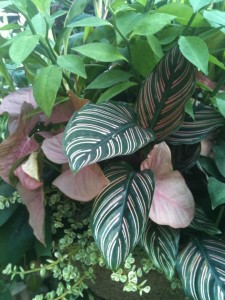
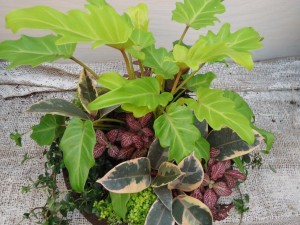
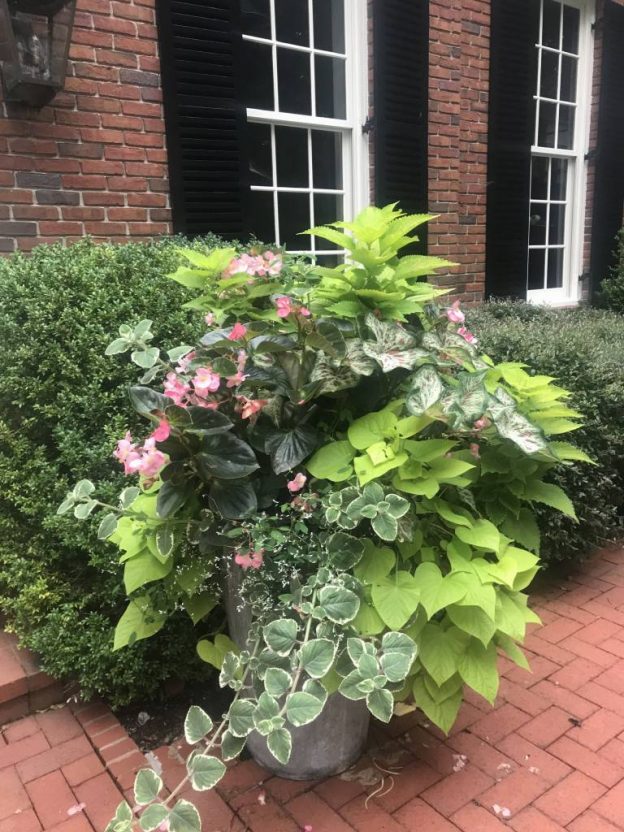
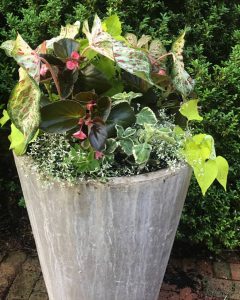

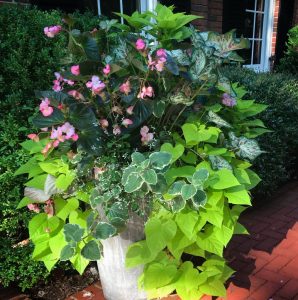

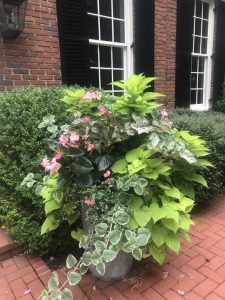
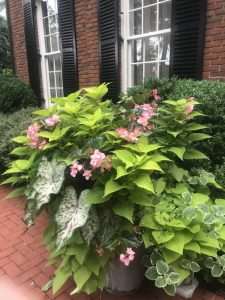
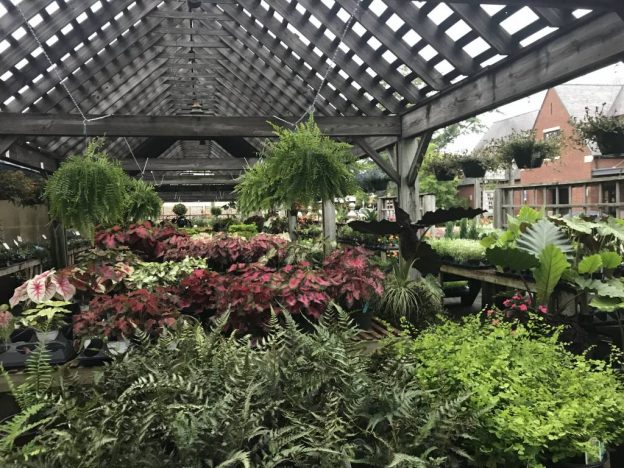
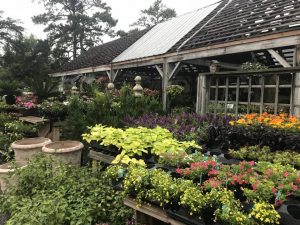
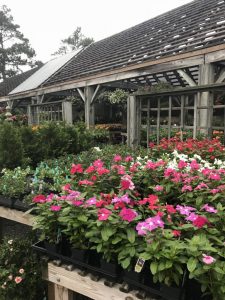
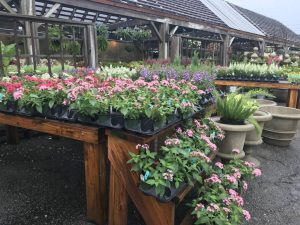
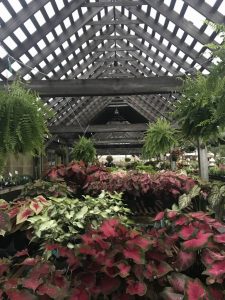
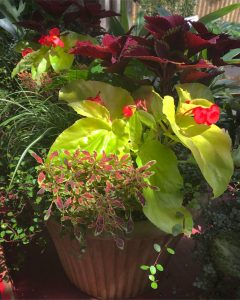
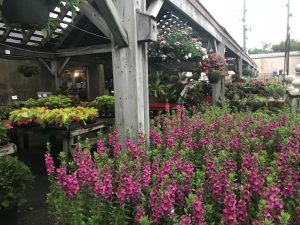
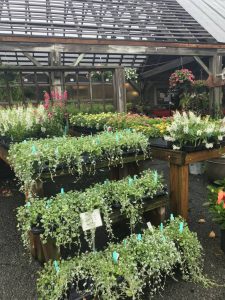
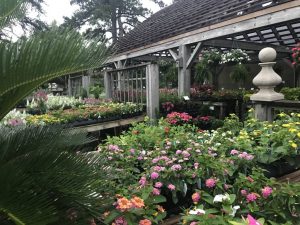
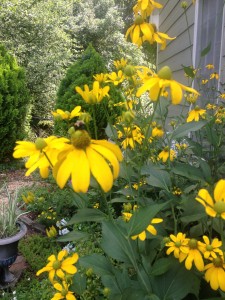

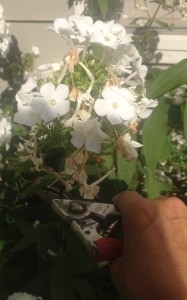
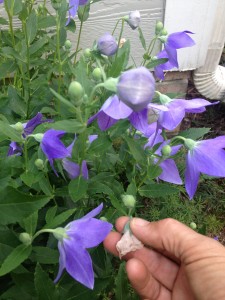
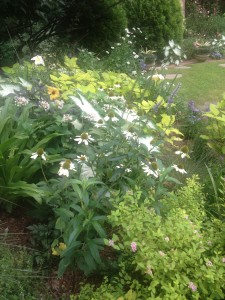
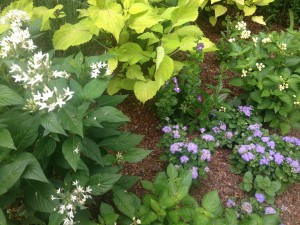
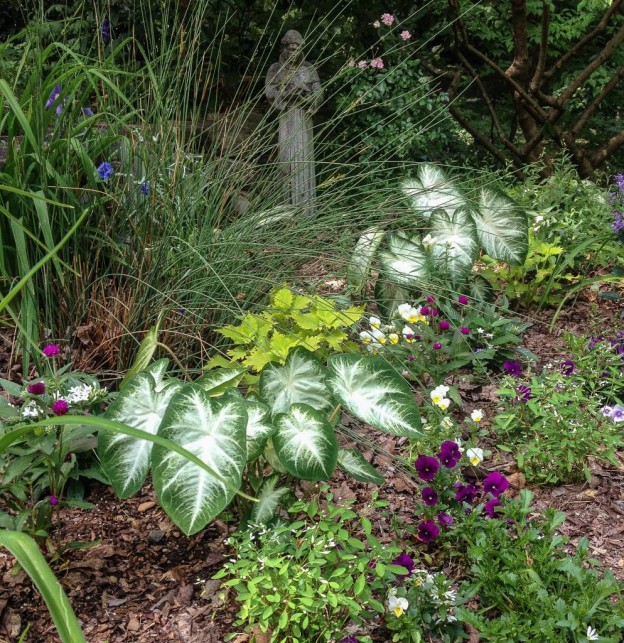
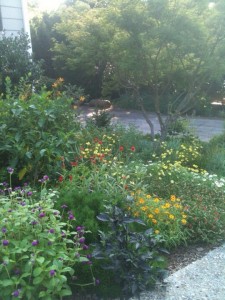 I read a piece that Tony Avent of Plant Delights Nursery wrote a few years ago about some people being “controlling” gardeners while others are “gambling” gardeners. I really thought it was spot on, and I can say I’ve worked with both types.
I read a piece that Tony Avent of Plant Delights Nursery wrote a few years ago about some people being “controlling” gardeners while others are “gambling” gardeners. I really thought it was spot on, and I can say I’ve worked with both types.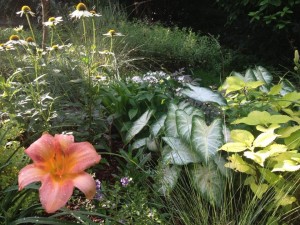
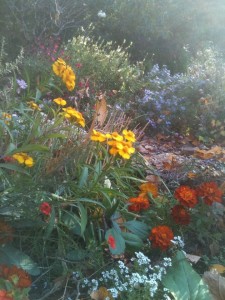 With the beginning of a new planting season, my personal outlook is going to be that of looking on my gardening efforts as a joy and an opportunity to not only beautify my landscape and surroundings but to nourish my soul as well; and, if there are failures, that will be part and parcel of the process. Some of my best plant combinations have been happy accidents!
With the beginning of a new planting season, my personal outlook is going to be that of looking on my gardening efforts as a joy and an opportunity to not only beautify my landscape and surroundings but to nourish my soul as well; and, if there are failures, that will be part and parcel of the process. Some of my best plant combinations have been happy accidents!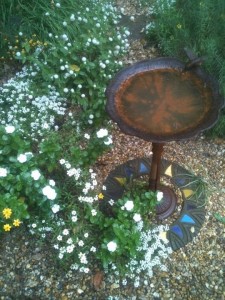 The pictures here are of my garden – plants are allowed to self seed, failures are yanked out, and plants that strike my fancy are tucked in here and there where I think they might look good. It wouldn’t make anyone’s list of a perfectly designed space, but it’s mine and that’s how you should treat yours too.
The pictures here are of my garden – plants are allowed to self seed, failures are yanked out, and plants that strike my fancy are tucked in here and there where I think they might look good. It wouldn’t make anyone’s list of a perfectly designed space, but it’s mine and that’s how you should treat yours too.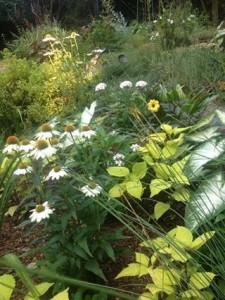 My ultimate hope is that many of you adopt the gambler attitude. It doesn’t have to be the high roller, high stakes approach, but try to roll with the plant punches, knowing they’ll come, and treat your gardening efforts as what they should be – a relaxing, and therapeutic addition to your daily schedule rather than a chore that’s only done on the weekends.
My ultimate hope is that many of you adopt the gambler attitude. It doesn’t have to be the high roller, high stakes approach, but try to roll with the plant punches, knowing they’ll come, and treat your gardening efforts as what they should be – a relaxing, and therapeutic addition to your daily schedule rather than a chore that’s only done on the weekends.